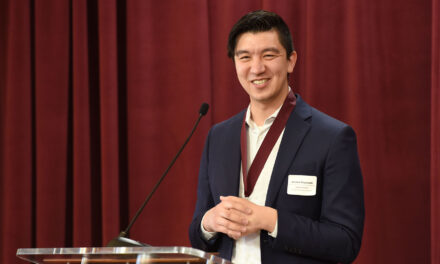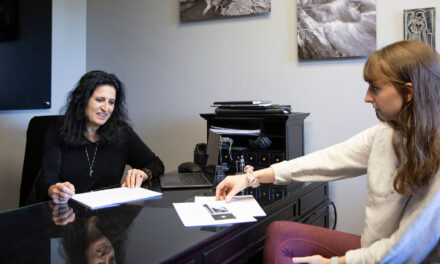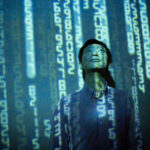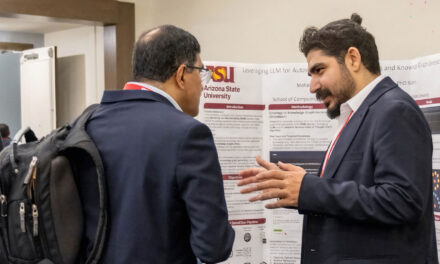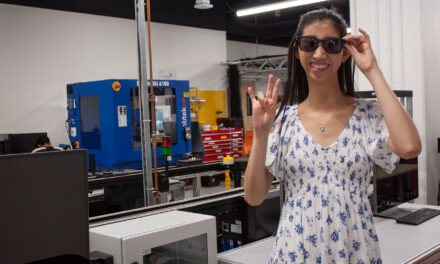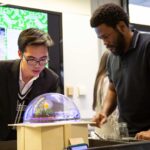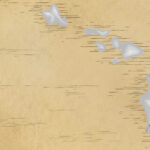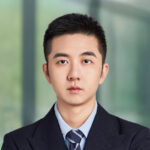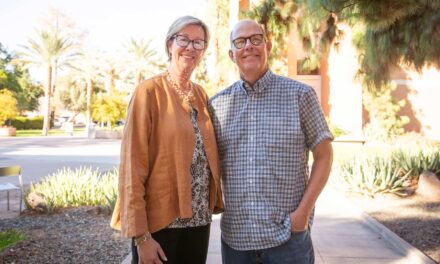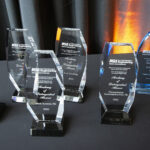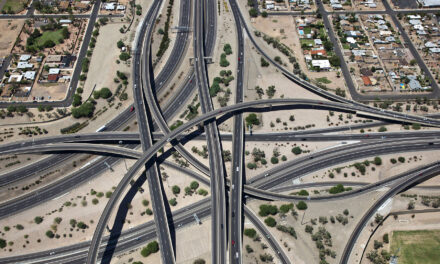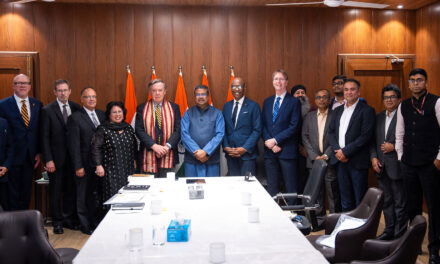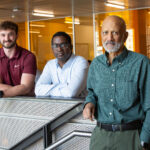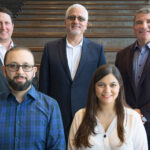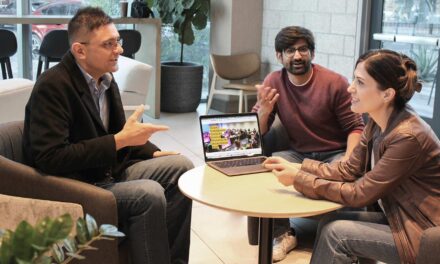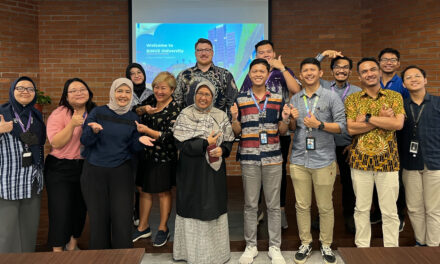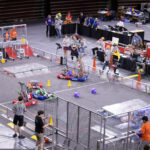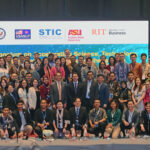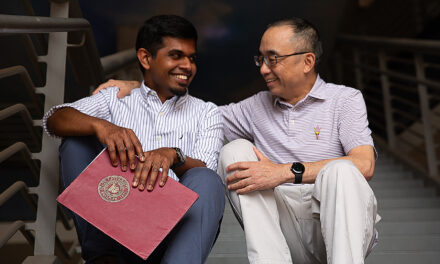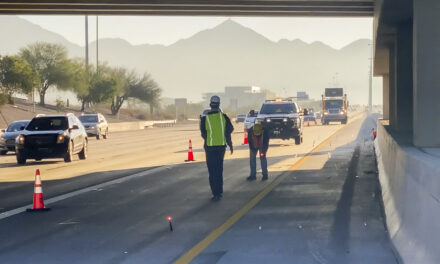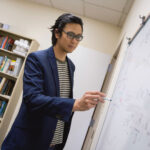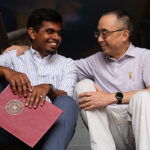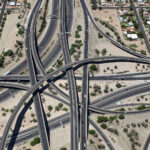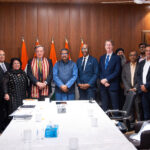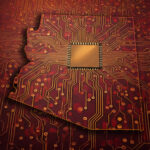
Essential reading
Posted August 7, 2013
ASU engineering faculty members say these books can expand your horizons
As an engineering student, you are well-advised to feverishly immerse yourself in reading material directly applicable to your studies and career aspirations. Still, it can be valuable to take detours into reading outside the specific scope – and sometimes far afield – of your major.
Your chances of success while in school and after graduation could benefit from insights and inspiration to be found in books that explore life from a variety of perspectives.
Here, 10 faculty members in Arizona State University’s Ira A. Fulton Schools of Engineering recommend books they believe can broaden students’ horizons.
For more book recommendations from other Fulton Engineering faculty members, see last year’s inaugural feature in this series.
# # #
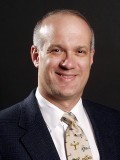 David Allee
David Allee
Professor
School of Electrical, Computer and Energy Engineering
Director of Research and Development for Backplane Electronics, Flexible Electronics and Display Center
“The Millionaire Next Door” by Thomas J. Stanley and William D. Danko
“Stocks for the Long Run” by Jeremy Siegel
Engineers can and should be millionaires by the time they are entering their retirement years. Like most of us engineers, I had read a lot about science and engineering. But I later discovered I had a gap in my knowledge in an area critical to a successful career: personal finance. In “The Millionaire Next Door,” the authors reveal how the people who became millionaires achieved their wealth. In “Stocks for the Long Run,” the author reveals the consistent and substantial returns one can realize through investment in the stock market over the long run. You will be surprised by both.
# # #
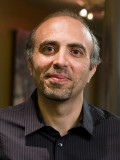 K. Selçuk Candan
K. Selçuk Candan
Professor
School of Computing, Informatics and Decision Systems Engineering
“Principles of Mathematics” by Bertrand Russell
This is a simply beautiful book on the fundamental ideas behind mathematics and its deep roots in logic. Written in the early 1900s, it served as a foundation for many of the mathematical and philosophical advances of the 20th century. Most impressive and instructive for me is Russell’s ability to guide the reader from the very basic logic and mathematical concepts to very thorny issues – such as infinity, space, and matter –(remember the book was written during the first years of the 1900s) without a single break in the underlying logical thread. For Russell, nothing is given or too obvious (it takes him 100 pages to lay down the logical foundations needed to introduce the concept of “number”). The care he puts into presenting the reader with all the tools necessary to follow his arguments and his willingness to avoid unnecessary and potentially misleading analogies and other rhetorical devices that could have introduced ambiguities into his narrative ensures that, despite its 500-plus pages, this is a surprisingly lean, yet complete treatment of mathematics. I recommend this book (and also others by Russell) not only to those who are interested in mathematics, logic and the history of philosophy, but also to those who want to observe first-hand (and marvel in) the extremely clean use of logic and the proper logical argumentation.
“How to Lie with Statistics” by Darrell Huff
We all use numbers in our daily work. We often use statistical arguments to support or refute various hypotheses or points of view. But are we using the statistical tools available to us correctly? Psychologists have shown that the human brain is not good at statistical thinking. (See for example “Thinking, Fast and Slow” by Nobel Prize-winning economist Daniel Kahneman – in which the author provides explanations for why we have difficulties in thinking statistically.) Therefore, we need to be especially vigilant when formulating statistically based arguments or when we are presented with statistically based conclusions. Huff’s relatively short book, written in the 1950s, is an entertaining, yet informative and instructive account of the dangers of the misuse of statistical tools (from the choice of data sample to the visual presentation of statistical information) and a handy and a concise guide on the proper use of statistical argumentation.
“The Selfish Gene” by Richard Dawkins
In a few short words, this is a book about natural selection and evolution. However, going way beyond its biological theme, the book (originally published in the 1970s) also tackles difficult sociological phenomena, from altruism to kin and group selection. Putting aside its sometimes contested conclusions, what is truly impressive about Dawkins’ book is that it starts with the simple idea of a “replicator,” and using this and basic scientific (observation and experimentation) and mathematical (game theory) tools, it lays down a theory that explains a wide gamut of concepts from DNA, to families, to gender conflicts, to cultural transmissions in the form of memes (the term “meme” was in fact coined by Dawkins in this book). This is a beautiful work and an homage to the power of the scientific method.
# # #
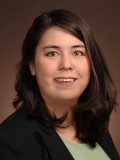 Jennifer Blain Christen
Jennifer Blain Christen
Assistant Professor
School of Electrical, Computer and Energy Engineering
“1984” by George Orwell
This classic dystopian novel describes a future society ruled over by a totalitarian government under which people’s thoughts and actions are monitored and controlled. This book has become ever more relevant with technological advances that we as engineers are creating. I believe this is an important read for anyone living in modern society, and it is especially relevant to engineers who will drive where technology is headed and how it is used.
“Brave New World” by Aldous Huxley
This novel describes what on the surface may seem like a utopian society, but it explores the frightening ramifications of controlling human propensities and emotions – starting with genetics and fetal conditioning – throughout life. The contemplation of the individual, his or her role in society and external influences over that role, make this book an important read. One can almost think of this book as philosopher Louis Althusser’s “Ideological State Apparatuses” taken to the extreme.
# # #
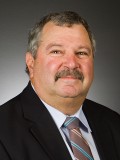 Edward Kavazanjian
Edward Kavazanjian
Professor
School of Sustainable Engineering and the Built Environment
National Academy of Engineering
“Flatland” by E.A. Abbott
Often viewed primarily as a critique of rigid social structure, the message of this book to me was the need to expand your perspective beyond the narrow confines of your personal experience. Flatland is a two-dimensional world inhabited by polygons: the more sides you have, the higher your social status. Hence, squares rank higher than triangles and circles have the highest status (and some polygons have surgery to break their sides into pieces to enhance their status). When Flatland is visited by a sphere from a three-dimensional world, the narrator (a square) rejects the notion of a third dimension. However, when the sphere (who is always projected as a high-prestige circle in Flatland) convinces the square that there is a third dimension, the square speculates about additional dimensions. The sphere ridicules this notion, as there clearly can be no dimension higher than his. (The sphere’s attitude reminds me of some clients I had when I worked as a consultant). The sphere’s inability to even consider the notion of a higher dimension is an essential message about the need to expand our horizons and think creatively, not bound by convention or conventional wisdom.
# # #
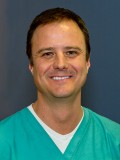 Jeffrey Kleim
Jeffrey Kleim
Associate Professor
Biomedical Engineering Program Chair
School of Biological and Health Systems Engineering
“Talent Is Overrated” by Geoff Colvin
The author is a longtime editor and columnist for FORTUNE Magazine and an anchor of Wall $treet Week with FORTUNE on PBS. He wrote the book with the business world in mind, but it provides an important perspective on what it takes to excel in any career endeavor. It is not talent, he writes, and it is not simply hard work that makes the difference. It is working smarter. It is deliberate and directed practice to improve the aspects of your life that need to be improved in order to succeed. He effectively uses examples of the achievements of professional athletes, musicians and entrepreneurs to make his point. There is much to be learned from this book about being both a successful student and a successful engineer.
# # #
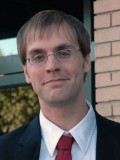 Ross Maciejewski
Ross Maciejewski
Assistant Professor
School of Computing, Informatics, and Decision Systems Engineering
“Outliers” by Malcolm Gladwell
This is a fun read for anyone interested in a revealing look behind the curtain at how not-so-random events in life can give people an opportunity to become outliers. This book combines personal stories with numbers and data, giving the reader insight into how seemingly arbitrary choices (such as a cut-off date for junior hockey leagues) actually can have a huge impact. It provides an entertaining entry point for any student wondering how statistics and data could ever be fun.
“The Road” by Cormac McCarthy
“The Dog Stars” by Peter Heller
“On the Beach” by Neville Shute
Post-apocalyptic novels such as these often come up when I talk to my friends in the Department of Homeland Security. I don’t know that any of these will teach aspiring engineers specific lessons, but they might get readers thinking about how the world would be if things go wrong. Engineers probably should think about such worst-case scenarios. It may inspire them to think about how to create technology that would help avoid such things. Thinking about books to recommend to students brings to mind a line from the latest book by “Game of Thrones” author George R.R. Martin. To paraphrase: “A reader lives a thousand lives before he dies. The man who never reads lives only one.”
# # #
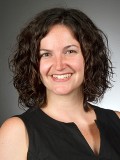 Kristen Parrish
Kristen Parrish
Assistant Professor
School of Sustainable Engineering and the Built Environment
Del E. Webb School of Construction Programs
“The Happiness Advantage” by Shawn Achor
Based on the “positive psychology” movement, first published by researchers at Harvard University, this book makes a compelling argument for work-life balance. Particularly as a new graduate student, and again as a new faculty member, I found myself tempted to work all the time. This book provides scientific evidence that people who balance their work with other activities, particularly those that bring them happiness, perform better than their constantly-working colleagues. What could be better than a book that tells you it’s OK to take a break? Probably only one, like this one, that gives you some explicit advice about how to let go of work to advance your own happiness and productivity.
“The Great Bridge” by David McCollough
This book by a Pulitzer Prize-winning historian chronicles the Brooklyn Bridge project, beginning with the idea of connecting Brooklyn and Manhattan and ending with the installation of the Brooklyn Bridge. I first read this book as a graduate student instructor for a construction law class and found myself lured into the intrigue, engineering and sacrifice that enabled this historic monument to come into being. The story describes the nexus of engineering, construction and public policy, and how these disciplines complement and clash with one another.
# # #
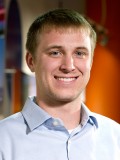 Scott Shrake
Scott Shrake
Lecturer
Engineering Academic and Student Affairs
Director, Engineering Projects in Community Service (EPICS) program
“Lean In” by Sheryl Sandberg
The author of this book comes with impressive credentials. Sandberg is the chief operating officer for Facebook, the former vice president of global online sales and operations for Google, and in 2012 was named to the Time 100, the annual list of the 100 most influential people in the world as selected by Time magazine. Based on her experiences and lessons she has learned in her jobs, her book provides an insightful look at the different roles and expectations placed on men and women in the workplace and at home. She brings to light important and often overlooked issues involving gender disparity and the lack of women in positions of leadership. Her book provides useful advice and relevant anecdotes for aspiring professionals at all levels and in all fields, plus it offers an excellent opportunity for the reader to engage in some critical self-reflection. As engineers we are seen as the doers and makers of the future, and this is a perfect read for our future engineering leaders with ambitions to make big things happen.
# # #
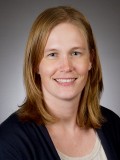 Sarah Stabenfeldt
Sarah Stabenfeldt
Assistant Professor
School of Biological and Health Systems Engineering
“Tuesdays with Morrie” by Mitch Albom
Albom’s memoir focuses on his happenstance reconnection with a college professor who was suffering from amyotrophic lateral sclerosis (ALS, also known as Lou Gehrig’s disease) and their philosophical conversations regarding life and death. The book highlights the main theme of living life to the fullest while engaging in meaningful personal relationships along the way. I initially read this book because it was required for my college freshman orientation session. But the book made a lasting impression on how I have pursued my career and work toward a balanced lifestyle to fully enjoy what the world has to offer.
“The Importance of Stupidity in Scientific Research” by Martin A. Schwartz
Department of Microbiology, University of Virginia, Charlottesville,
This short essay featured in the Journal of Cell Science, written by a well-respected researcher in molecular biology, describes how most students pursue math and science fields because they perform well in those areas in primary education. However, as students progress in their field of study, they need to realize that science research is based on exploring the unknown. To fully enjoy the sciences, and more specifically scientific research, one must embrace the uneasiness of not knowing all the answers and asking strategic questions to advance knowledge further. My post-doctoral research mentor gave me a copy of this essay. I still have it posted at my desk as a constant reminder to push the limits of my research.
# # #
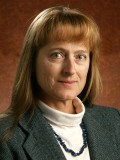 Valana Wells
Valana Wells
Professor
Mechanical and Aerospace Engineering Program Chair
School for Engineering of Matter, Transport and Energy
“The Pillars of the Earth” by Ken Follett.
This historical novel, set in 12th-century England, traces the design and construction of a medieval cathedral – a process consuming more than 40 years and three master builders. The story follows the lives, loves and tragedies of the cathedral’s original engineer, his sons and successors and an assortment of noble and ignoble characters throughout the immense structure’s turbulent construction period. Though there are some known historical inaccuracies, particularly with regard to the language and beliefs of the peasant classes of that period, experts have validated the author’s account of the development of northern European architecture and engineering during the period between about 1125 and 1175 A.D. This is a long novel at almost 1,000 pages, but it is an easy read – the perfect summer escape fiction, with enough of a technical tie-in to satisfy the left-brainers. The Starz channel miniseries based on the book faithfully follows the storyline and has an excellent cast (including Ian McShane, Matthew Macfadyen and Donald Sutherland). But read the book instead for insights into the engineering and construction methods of the time and the evolution of those methods through the course of the mid 12th century.
“The Essential Engineer” by Henry Petroski
The author holds professorial appointments in both civil engineering and history at Duke University, and he showcases his expertise in both fields in his writings. The author of more than 10 books on engineers and engineering, in this one Petroski illuminates the similarities, but especially the differences, between scientists and engineers (“… whose name derives from the Latin ingenium, connoting a talent for devising ingenious devices and systems …”). He proceeds to argue that the most challenging of societal and global problems cannot be solved by scientists (or politicians) alone – hence, the “essential” engineer. Using the development of alternative and clean energy as a backdrop, Petroski illustrates how engineering can proceed without complete knowledge of science and how even when science is well-known, solutions to difficult problems require skillful engineering to be effective. Several other themes thread through this book, including a look at how the engineering profession is viewed by the news media and the public. (Hint: it’s not very accurate or flattering, even in this age of high technology.) Petroski writes in an engaging style that appeals to all, but engineers in particular can appreciate his well-researched insights into some of today’s most pressing engineering challenges.
Media Contact:
Joe Kullman, [email protected]
(480) 965-8122
Ira A. Fulton Schools of Engineering


